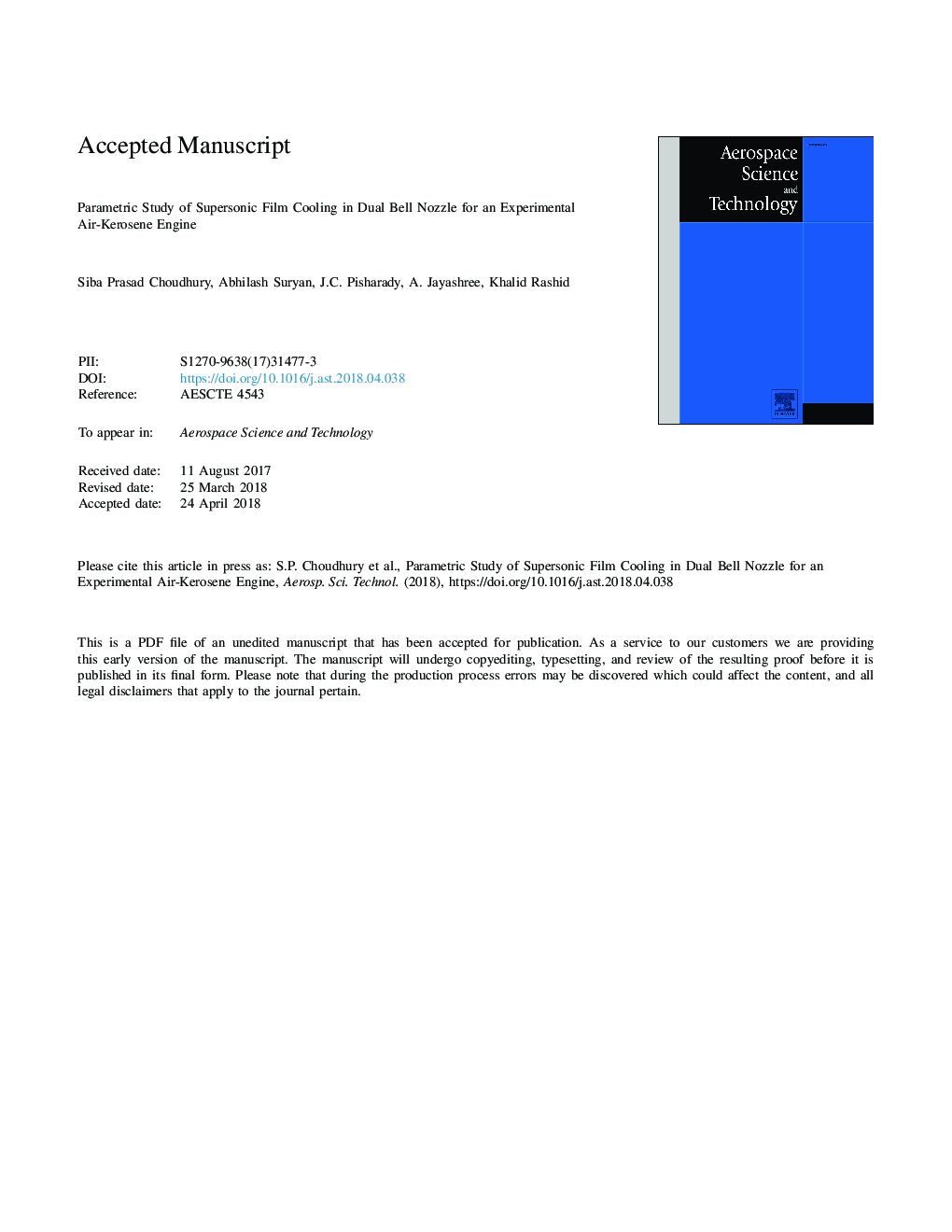| Article ID | Journal | Published Year | Pages | File Type |
|---|---|---|---|---|
| 8057523 | Aerospace Science and Technology | 2018 | 35 Pages |
Abstract
Numerical analysis is performed on a dual bell nozzle designed for an experimental semi-cryogenic rocket engine application to predict the effect of film injection on nozzle flow characteristics and transitional behavior. Both start-up and high-altitude operation regimes are simulated to predict actual flight conditions of a dual bell nozzle. Coolant is injected at two locations and at different operating conditions to study the effect of various parameters on flow behavior. Changes in shock interaction and shock patterns during startup flow with and without the injection of coolant are analyzed. An empirical relation for conventional nozzles has been applied to determine the transition pressure ratio. Actual transition flow from base to extension nozzle is found to be different from the calculated transition pressure ratio and flow transition occurs early in case of secondary injection. A large reduction in wall temperature is observed with the film flowing along the nozzle wall and it does not have any adverse effect on flow transition. Instead of efficiency, a film cooling effectiveness for high temperature flow is used to understand the effect of coolant temperature on reduction of heat flux and mixing characteristics. Mass flow rate of coolant is seen to have significant effect on mixing and flow separation.
Related Topics
Physical Sciences and Engineering
Engineering
Aerospace Engineering
Authors
Siba Prasad Choudhury, Abhilash Suryan, J.C. Pisharady, A. Jayashree, Khalid Rashid,
